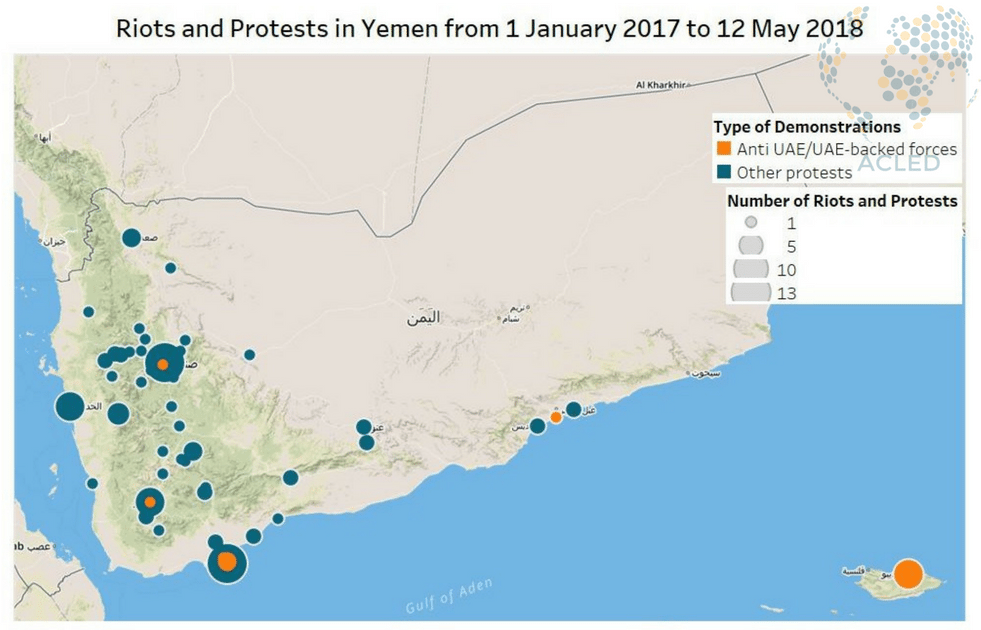Over the past weeks, Socotra has been the site of an unprecedented wave of demonstrations denouncing the militarisation of the island and the encroaching presence of the United Arab Emirates (UAE). Protests have intensified in early May, after hundreds of troops belonging to the UAE arrived on the island taking de facto control over the local seaport and airstrip (The Independent, 9 May 2018). Locals claim that the UAE aims to overtake Socotra to establish a military outpost in the Arabian Sea, while a heavy military deployment would endanger the fragile flora and fauna of this renowned UNESCO heritage site lying 380km south of Yemen.
These recent developments have ignited a major diplomatic crisis between the internationally recognised government of Yemen and the UAE, a key ally in the war against the Houthis as a member of the Saudi-led Operation Restoring Hope. During a rare visit to the island in which he accused the UAE of occupying Socotra, Emirati troops controlling the airport reportedly prevented the Yemeni Prime Minister Ahmed Bin Daghr and ten of his ministers from leaving the island (Al Jazeera, 4 May 2018). In an effort to mediate the crisis, Saudi forces have been deployed to Socotra to conduct joint military trainings with the Yemeni government and the UAE (The National, 13 May 2018).
Yet cracks in the Saudi-led coalition that supports President Abdo Rabbu Mansour Hadi are not new. The UAE have had a military presence in the islands of Socotra and Perim for over a year, while trying to extend their influence across the Gulf of Aden (Al Araby, 17 May 2017; Reuters, 15 March 2018). Several demonstrations against the UAE and the constellation of UAE-backed armed groups have taken place across all of southern Yemen since 2017 (see figure below). UAE-backed military forces have clashed in several occasions with troops and militias loyal to President Hadi, revealing how profound strategic divergences within the anti-Houthi front are affecting conflict dynamics (ACLED, 10 May 2018).
Despite the announced withdrawal of UAE troops following Saudi mediation (Al Masdar, 14 May 2018), their strategic interests appear to be increasingly at odds. Though geographically and politically peripheral to mainland Yemen, Socotra has been at the centre of a major power struggle that exemplifies the complexities of the Yemeni Civil War. Local protests on this remote island quickly turned into a diplomatic crisis that involved the Yemeni government and the two key stakeholders of the Saudi-led coalition. These recent events therefore show how in Yemen upsetting local orders may have wider national and international repercussions.
Find an explanation of ACLED’s methodology for monitoring the conflict in Yemen here.
AnalysisCivilians At RiskFocus On MilitiasMiddle EastPeacekeepingPolitical StabilityPro-Government MilitiasRioting And ProtestsUnited NationsViolence Against Civilians






